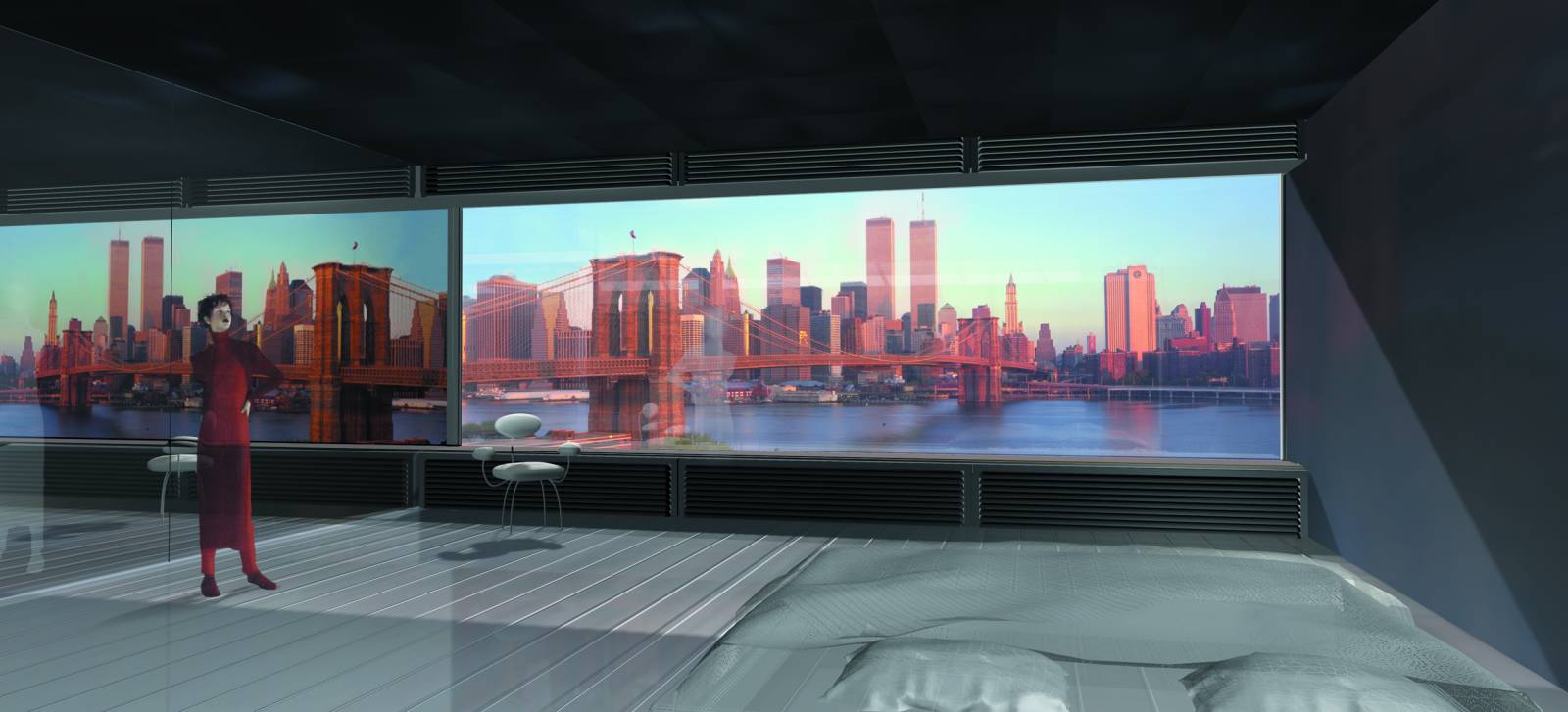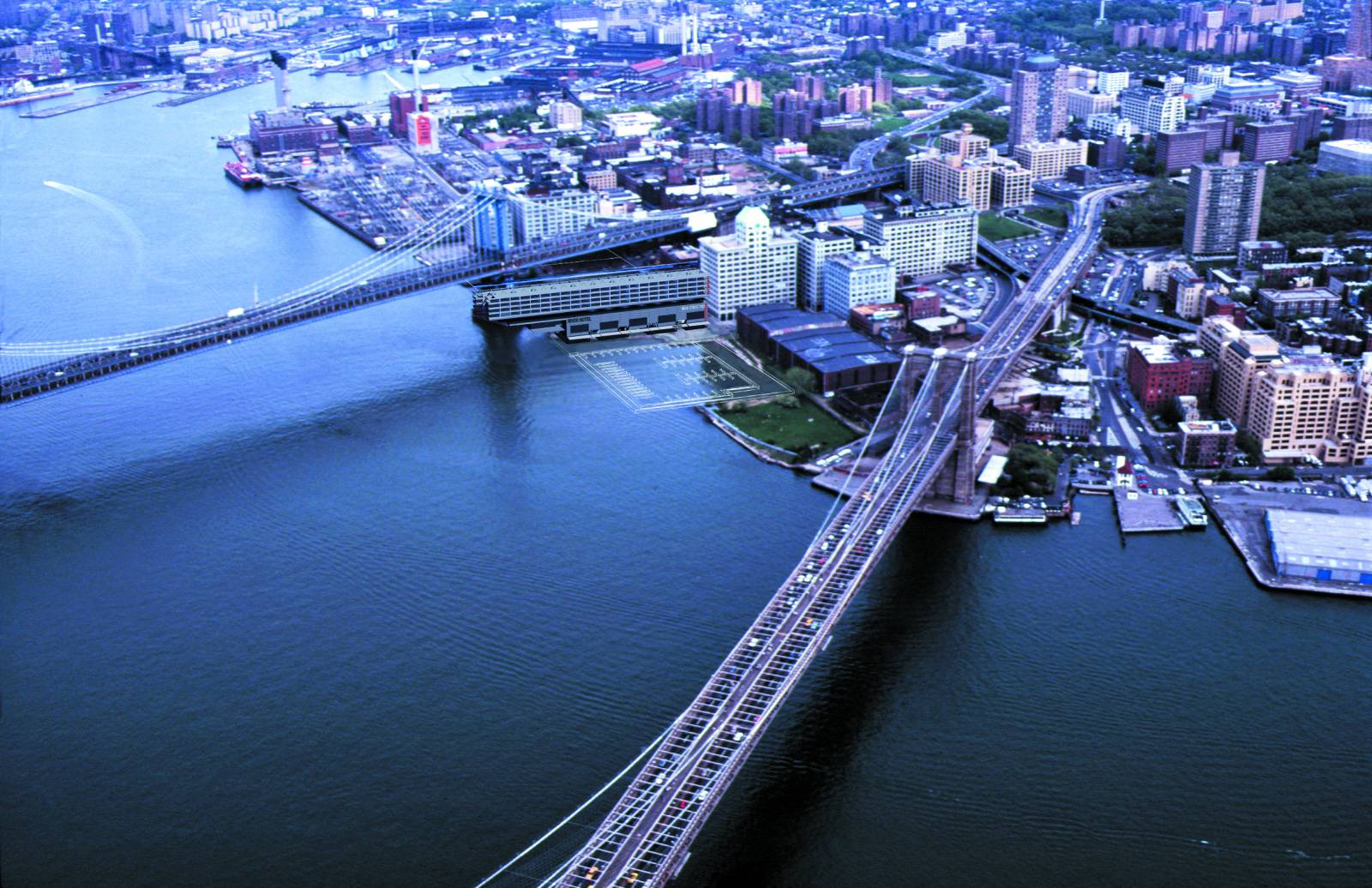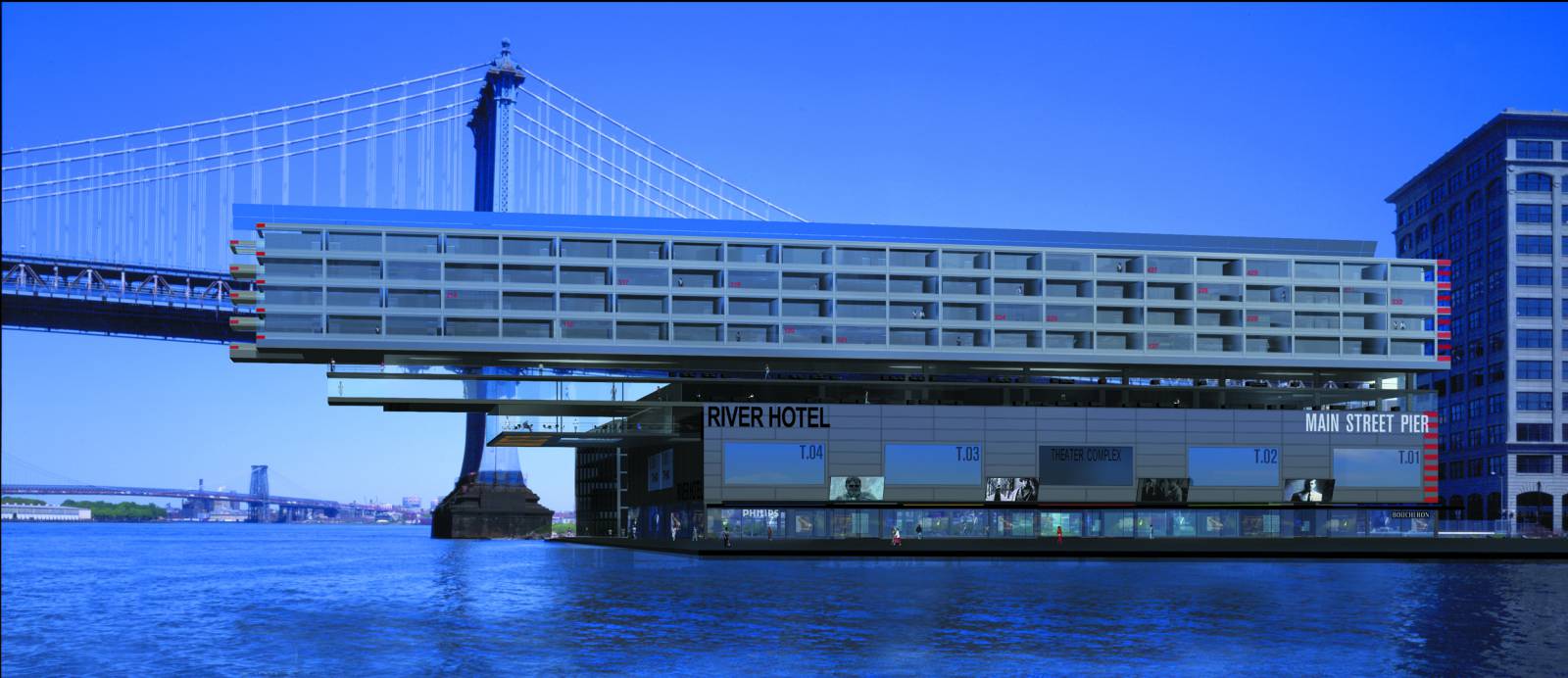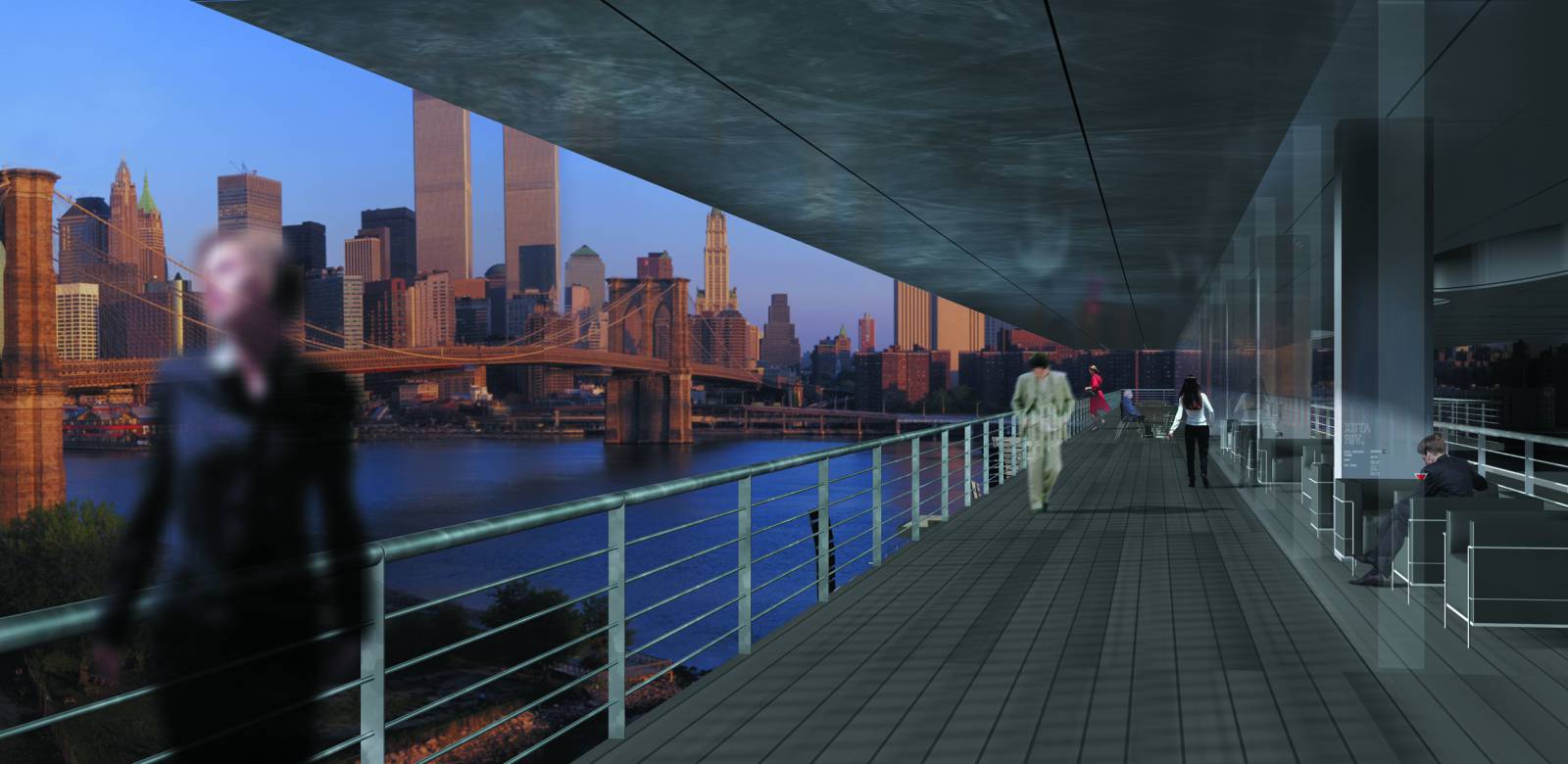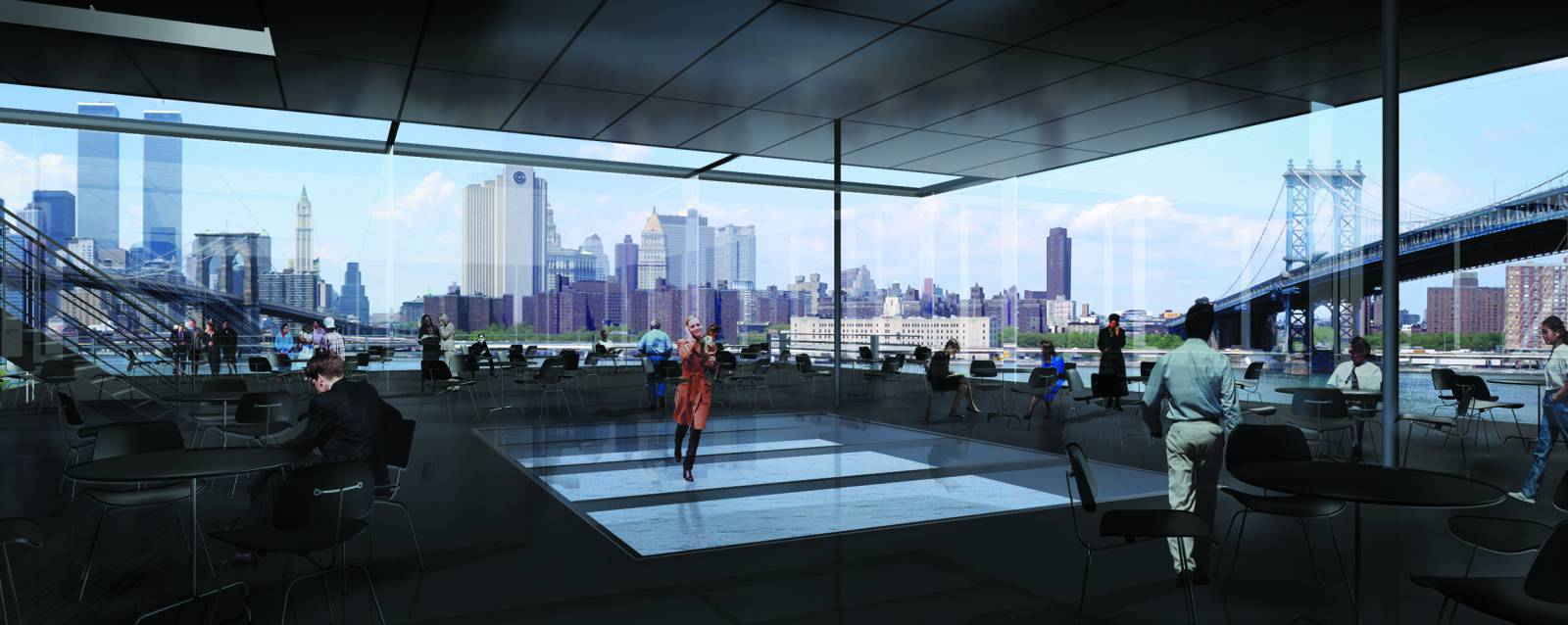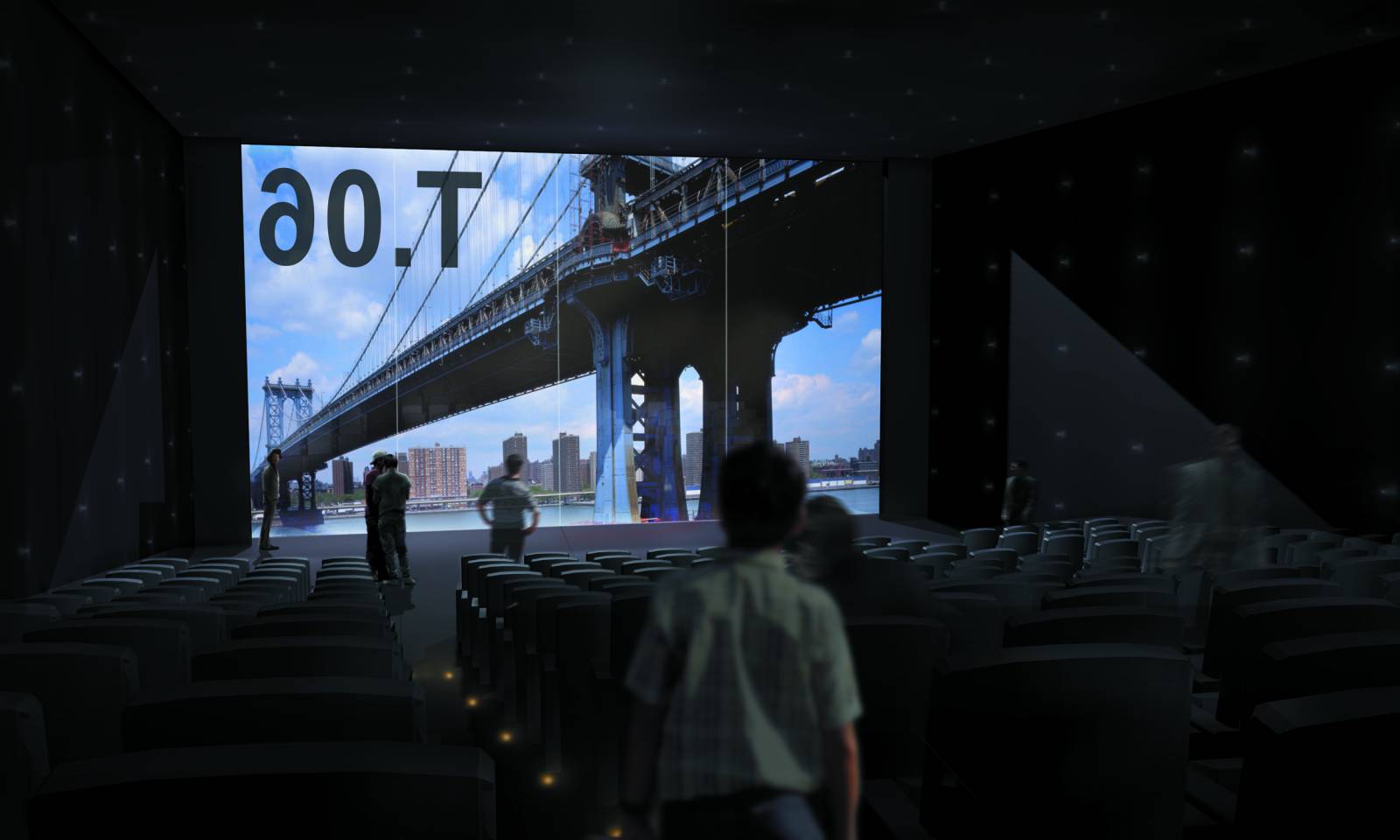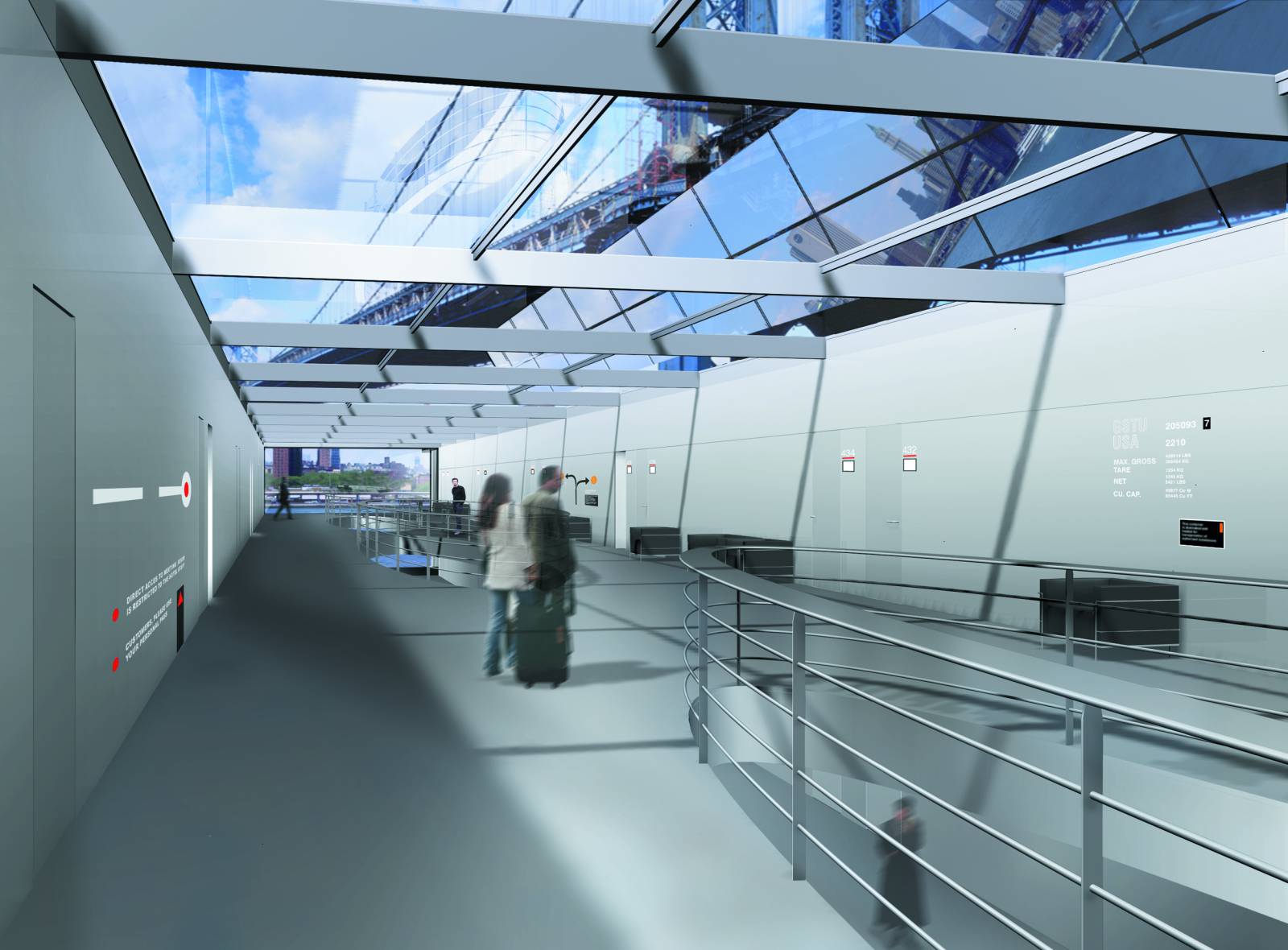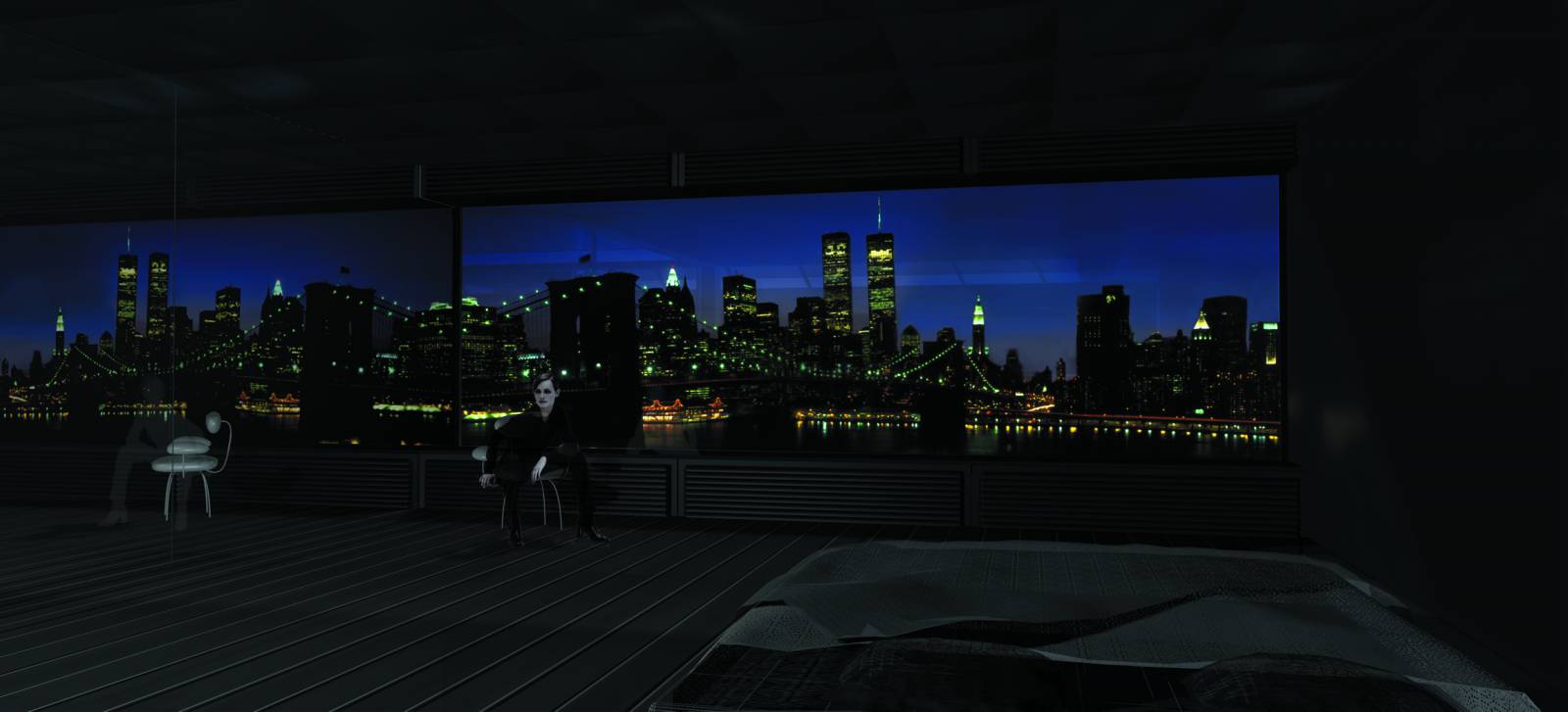- Previous project: Fondation Cognacq-Jay / Maison de retraite
- Next project: Cognacq-Jay Foundation / Nursing home care
Dumbo Hotel
- New York, USA
The Mirror of Manhattan
In fairy tales the wicked witch keeps the princess from seeing herself in a mirror to prevent her from discovering her beauty. Admiring one’s own image, being certain of one’s splendor, is such a pleasure that it has been elevated to the rank of a sin. Here is an irresistible occasion to hold up Narcissus’s mirror to Manhattan and say: look at yourself; delight in yourself! The Fulton River Café was already a shard of the mirror. The river hotel will amplify the effect tenfold!
Panoramic views will stretch to the maximum, with sheets of glass so wide and so clear that people will wonder if they even exist. Images will stretch and duplicate in these planes of reflecting glass, creating a play between the real and the virtual.
The rooms are conceived as spacious balconies overlooking the Brooklyn Bridge and the downtown skyline, or, on the other side, the Manhattan and Williamsburg bridges. The power of these views derives from the bridges in the foreground, which contrast against a precious accumulation of background silhouettes: the Statue of Liberty, the skyline from South Street Seaport to the Empire State Building. Other rooms exploit vertiginous views upward toward the Manhattan Bridge, exploiting its fantastic dimensions. The River Hotel is in essence a bridge between two bridges: a place for looking at the city’s bridges as if from the deck of a ship. It obeys the strict logic of New York’s piers and respects the orthogonal urban grid running down to the water. It stretches its facade to the utmost, cantilevering over the river as if to reach the other side – as if it feels it belongs more to Manhattan than to Brooklyn.
The west deck of the hotel’s lobby features a bay window over a hundred meters long for a view to the opposite shore. The health club extends under Manhattan Bridge, extending its floors behind a wall of glass twenty meters high at the water’s edge. Even the movie theater takes advantage of the scenery: during intermission the screen lifts to reveal the Manhattan skyline and the bridges. And all along the piers, shops will accompany the riverside promenade.
In this way you will discover at the foot of the Brooklyn Bridge a little piece of Brooklyn that, by dint of looking at Manhattan, has become Manhattan.
Jean Nouvel
